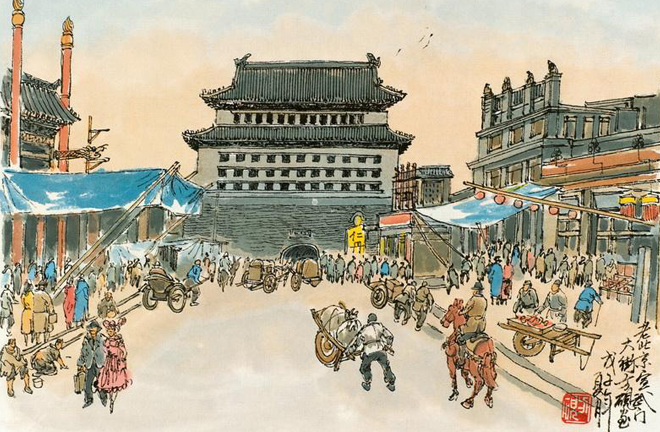Scholars call for dialectic view on narrative turn of historical research

Traditional historigraphy was dominated by politics, military and economy, while the narrative turn discards the “grand narrative” and focuses on cultural and social aspects.
In recent historical research, there has been a narrative focus that included previously overlooked aspects, such as margins and regions. Scholars have indicated that this shift complements areas neglected by traditional historiography. However, too much attention is paid to lower levels, margins, gender, local research, daily life and micronarratives, which may lead to the elimination of historic objectivity and the silencing of grand narratives.
Lai Guodong, an associate professor of history at Xiamen University, said that the narrative turn occurred after the 1960s. In 1979, British historian Lawrence Stone published the article “The Revival of Narrative: Reflections on a New Old History” to analyze the development of historiography since World War II, arguing that there has been a revival of narrative in Europe. According to Stone, narrative refers to the organization of materials in chronological order while placing the content in a single, coherent story, though it contains some sub-plots.
“The historiographical theories on the narrative turn emphasize the analysis of historians’ personal experiences and emotions in historical narrative through historical texts, which renders historians no longer deliberately able to evade the role of subject consciousness in historical research, thus changing the form of historiography,” said Liu Xiongwei, director of the Historical Theory Teaching and Research Office of the School of Art at Jilin University.
Liu pointed out that the historical research in this narrative shift discards the political theme of traditional history in that it has a “great perspective” that has nothing to do with the individual experience. The narrative shift centered on the historical writings that focus on ordinary people’s daily lives. In terms of methods, the historical study of narrative shift has paid more attention to the application of interdisciplinary theories, such as psychology, sociology, and communication, which has expanded the scope of historical understanding. In addition, historical research of narrative shift emphasize “the other,” rather than “the subject,” that is, to include factors of emotion, experience and will in historical thinking, making historical research more vivid and closer to real life.
Su Quanyou, a professor from Henan Normal University, said that with the 1980s as the boundary, historiography has undergone tremendous changes in the selection of research objects. Before that, historical research was dominated by politics, military and economy, and then it gradually included cultural and social aspects.
Lai proposed that there is indeed some “danger” in the narrative turn. Liu said the influence of narrative shifts on history research are two-sided. In the positive sense, it complements well the areas that traditional historiography neglects, such as gender, environment and disease. In the negative sense, the narrative turn causes misdirection. It seems that the themes and contents of traditional historiography are out of date.
Liu said that political life is always the most important part of human social life. At this point, traditional political historiography has captured the most critical part of history. It is precisely because traditional historiography well shouldered its due social responsibilities and nurtured a batch of socially aware historians. The historical study of the narrative turn of course pays attention to the areas that have been neglected by traditional historiography. However, if these borderline fields are regarded as the theme or even as the only theme, they will certainly dispel the social and political responsibilities that historiography has been undertaking for thousands of years, and the humanistic spirit and attitude of care would eventually shrink. In our era of “disenchantment,” if historiography still wants to truly develop a humanistic spirit, it must inherit traditional research themes and interests.
Liu said that there should be inheritance and continuation, not a break, between traditional historiography and the narrative shift. The narrative shift has made historical research pay more attention to historical details, especially ordinary people’s daily lives. However, it should be noted that if one departs from the consideration of the macroscopic structure of history and becomes blindly obsessed with historical details, it would be a misinterpretation of history. Today’s historical research should consciously evade the fragmentation brought about by specialization and reawaken the dedication to overall vision.
Lai said the understanding of an incident must depend on the structure, social environment, and power framework in which it is located, while the structure and social environment are shaped by individuals and events. Therefore, the macrostructure is an abstraction of the contexts involved in history from a larger perspective. It is both a framework for individual actions and a place where individuals may and need to break through. The narrative shift should also be based on a profound grasp of the achievements of structural history.
(edited by SUI JINGJING)

 PRINT
PRINT CLOSE
CLOSE